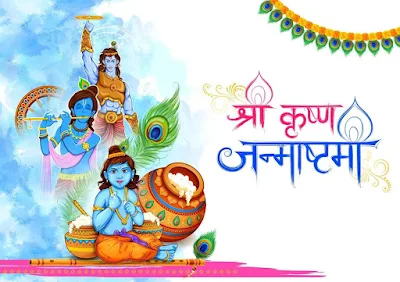Bhadrapada
Bhadrapada is aka Shata in the Mesopotamian calendar that spans between August and September on Gregorian calendars. Bhadon and Bhado are other names for it in different parts of India. Bhadrapada, derived from Sanskrit Bhadra (‘auspicious’) and pada (‘step’ or ‘foot’), signifies a month packed with symbolically significant occasions and celebrations.
 |
| Bhadrapada Month |
https://bharatpractice.blogspot.com/2024/08/why-ashoka-is-called-great.html
Significance
Hinduism places great value on Bhadrapada, which is regarded as a holy month for different religious actions and events. Numerous festivities and observances are held in honor of various gods and goddesses.Bhadrapada Festivals
Bhadrapada is a Hindu lunar month corresponding to August-September in the Gregorian calendar. The Bhadrapada season is full of significant festivals and rituals making it a spiritually & culturally colorful time of the year. Some important festivals celebrated during Bhadrapada are as follows:
- Description: Lord Ganesha’s birthday is commemorated through this festival, which is among the most celebrated and adored in India.
- Celebrations: The festival includes daily prayers to Ganesha’s idol in clay forms placed at home and public places; on Anant Chaturdashi, the last day it culminates with large parades and immersion of idols into water bodies.
- Description: This one is in honor of the birth of Radha, the favorite mate of Lord Krishna.
- Celebrations: To honor Radha, worshippers stay hungry throughout the day singing bhajans and making special offerings.
- Description: This day is dedicated to Lord Vishnu who is presented as an infinite figure (Anant) and it also signifies the end of Ganesh Chaturthi festivities.
- Celebrations: During this ceremony, devotees wear a holy thread around their arms, and, remembering Vishnu, they make ceremonial prayers. At the same time, grand parades take place as Ganesh images are buried in waters on this day.
- Description: It’s sixteen days devoted to carrying out rituals and making offerings to honor the dead.
- Celebrations: During this time, families carry out Tarpan (offering water), Pind Daan (offering food), and other rites to pay their respects and receive blessings from the departed ones.
- Description: This festival is celebrated by women so that they can apologize for all offenses made during their periods of menstruation and pay tribute to seven illustrious sages named Saptarishi.
- Celebrations: The women fast, perform ritualistic baths, and say prayers to remove sins.
- Description: A festival that mostly takes place in Maharashtra where people worship Goddess Gauri who is a form of Goddess Parvati.
- Celebrations: Women bring idols of Goddess Gauri into their houses perform puja and offer different types of food and flowers.
Astrological Importance of Bhadrapada
- Bhadrapada is an auspicious month for various astrological and spiritual practices. The planetary positions during this time are believed to be favorable for starting new ventures and performing religious ceremonies in people’s lives according to astrology.
- A month ruled by arrangement with Nakshatras is characterized by the existence of Purva Bhadrapada and Uttara Bhadrapada. Change and cleansing are linked to Purva Bhadrapada, while spirituality and profound knowledge are represented by Uttara Bhadrapada.
- Spiritual Practices: Bhadrapada is viewed as a favorable season for putting into practice spirituality, contemplation, and ceremonies that are intended to change one’s inner self. This energy during this time provides a conducive environment for self-discovery and development.
- Invocation of Good Fortune
Favorite Activities: Some days in Bhadrapada are believed to be good for new beginnings like educational, learning, and spiritual practices.Rituals and fasting: This month should be used for rituals, fasting, and sharing with others as they help produce good effects and also purify one’s heart.
Frequently Ask Questions
What are the major celebrations held in Bhadrapada?
Among the key festivals are Ganesh Chaturthi, Radha Ashtami, Anant Chaturdashi, and Pitru Paksha.
What makes Bhadrapada a holy month?
The many religious observances and propitious placements of planets that generate growth of spirit and beginnings are the reasons that make Bhadrapada sacred.
How do people celebrate Ganesh Chaturthi during Bhadrapada?
Celebration of Ganesh Chaturthi occurs through the installation of Ganesh idols in homes and public places, daily prayers, and impressive processions take place for idol immersion on Anant Chaturdashi.
What is the significance of Pitru Paksha in Bhadrapada?
Pitru Paksha is a 16-day period during which rituals and offerings are made to honor and appease the ancestors so that they may bless the family.
Bhadrapada affects agriculture, doesn’t it?
It signifies a time for very quick preparations in agriculture; agriculture is affected by this season due to its major rains that leave much water on the ground.
Which main nakshatras affect Bhadrapada?
The main nakshatras affecting Bhadrapada are Purva Bhadrapada and Uttara Bhadrapada whose features are change, cleansing, religiousness, and profound knowledge.




